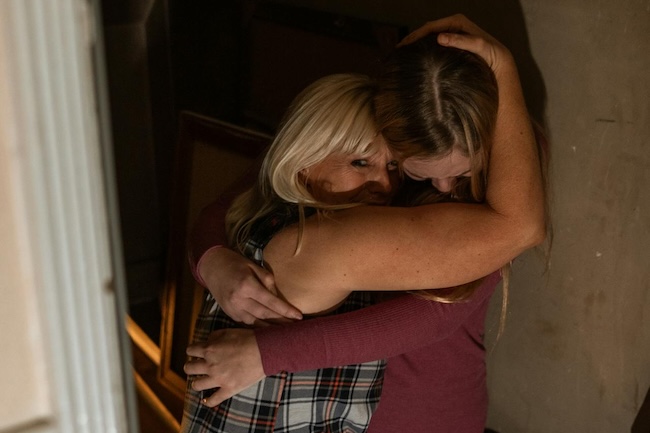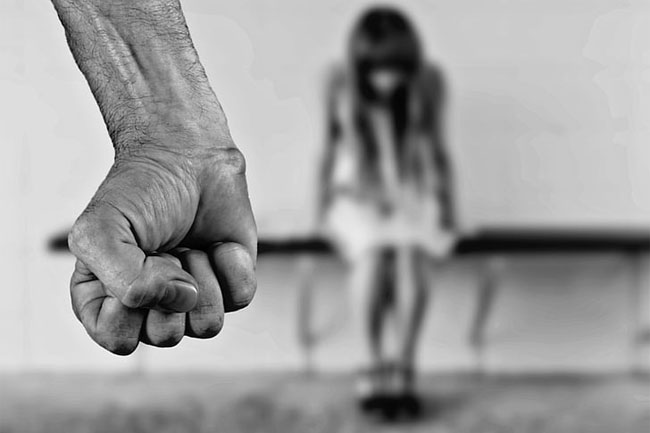The women of Burma are facing horrible conditions causing them to flee, becoming refugees with no hope, writes Johanna Higgs.
MAE SOT, THAILAND: In Mae Tao hospital, on the dusty border town of Mae Sot, a young woman called Aye Moon from Myawaddy in Burma sits on a hospital bed with a small baby in her arms. She, like many women, snuck over the border to Thailand illegally to give birth to her child, saying the conditions in Burma were not good enough. She is a rice farmer and didn’t make it past grade two, as there wasn’t enough money to go to school. When asked if she is facing any difficulties in Thailand, she looks away shyly. She doesn’t want to say.
However, the reality for many of the Burmese women crossing into Thailand is that they are facing tremendous difficulties.
Mae Sot has been one of the entry points for many of Burma’s fleeing refugees and migrants into Thailand. Throughout the town, Burmese women can be seen walking through the dusty streets in sparkling, colourful headscarves and in small, makeshift restaurants, selling Burmese food line the sidewalks.
Many Burmese have come to Thailand to either escape ethnic violence or the widespread poverty throughout the country.
The U.N. Office for the Coordination of Humanitarian Affairs (OCHA) estimates that there has been around 250,000 people displaced by the violence inside Burma. Hundreds of thousands of refugees have also fled to neighbouring countries and, according to OCHA, it is estimated that there are currently around 100,000 Burmese living in refugee camps in Thailand. Neighbouring China and Bangladesh have also received high numbers of refugees.
However, for many women and girls, aside from violence and poverty, it is also the threat of sexual violence that has sent them fleeing.
The Information Reporting Director from the Free Burma Rangers, an NGO based in Chiang Mai, which conducts humanitarian missions into conflict-stricken areas in Burma, reported that sexual violence is a serious problem in conflict areas.
In an interview, he said:
“The Burmese army have always used rape as a weapon of war. It happens today, even with children.”
In their war crimes report, Giving birth on the run: Kachin flee as Burma Army attacks, they have documented numerous cases of rape at the hands of the Burmese Army, including the gang rape of a 40-year-old woman and two girls, aged 12 and 14, who were raped when going back to a school.
However, for many women and girls, arrival to refugee camps doesn’t necessarily mean an end to the violence.
Rebeca Cenalmor-Rejas, a protection officer at UNHCR in Mae Sot, said that women and girls in the refugee camps often face the same problems inside the camps as they do back home:
There are problems with domestic violence and different types of sexual based violence, including with children. It is mostly the other refugees who are doing the sexual abuse. Sometimes, there are girls as young as seven years old being abused, but often they are 10 or 11 years.”
There have also been cases of child marriages, where girls have been married as young as 15 years old. There have been numerous cases of girls dropping out of school and it is all linked to gender equality. You see it everywhere in their communities and it is underreported everywhere.
A young woman who grew up in Mae La camp along the Thai-Burma border, who asked not to be named, recalled how there were many cases of sexual harassment and rape in the refugee camp when she was growing up:
I remember when women wanted to leave the camps to go and find something to eat, they would have to go past the Thai police. Sometimes the police would force them to have sex. It happened to my friends, they were only 15 or 16 years old. They had to accept it so that they could go out and find food.
If you were a refugee in a camp then you couldn’t do anything, you couldn’t get any justice.
Human trafficking is also a serious problem for those fleeing war, with women and children often being the most vulnerable.
Pregnant #Rohingya women shunned by families after mass rapes. https://t.co/p9iqnlM1T7 #Myanmar
— Mukwege Foundation (@MukwegeFound) July 27, 2018
Peter Trotter, the Senior Field Coordinator at UNHCR in Mae Sot, explained that trafficking is endemic in the region:
“Thailand has just changed to Tier 2, but people don’t really want to talk about it. It’s not just refugees who are subject to trafficking, in fact refugees might be more protected. It’s everywhere.”
Burmese are often tricked by traffickers who tell them that they are taking them to Thailand to work. They are then, instead, sold into forced labour or sex trafficking networks. Women and children are mostly sold into sex trafficking and, in some cases, are taken to China to be sold into forced marriages to Chinese men.
Aung So, the director of the Committee for the Promotion and Protection of Child Rights in Mae Sot, said that there are also many cases where family members sell their children into trafficking networks.
“There are cases where parents go to Bangkok to work and leave their children with the grandmother. If she can’t afford to feed them then she’ll sell them, mostly for labour exploitation. The child could be as young as 10 years old.”
Aung So says that much needs to be done to bring a stop to this abuse against women and girls. Reducing poverty and improving women’s economic situations would be a big step in this direction by making women and girls less vulnerable to abuse.:
“If there were more jobs for women and girls then there would be less trafficking and less abuse. If there was a better economic situation, then they would have a better situation.”
Johanna Higgs is an anthropologist and founder of Project MonMa, which advocates for women’s rights around the world.
To prepare for Tom Lantos human rights hearing 2day with @RepMcGovern on Burma's military rape I read @HRW reports from past 10 years - horrifying that what I heard from Rohingya women and girls is just the last of decades of entrenched abuses. https://t.co/SLRzrxhra2
— Skye Wheeler (@WheelerSkye) July 25, 2018
 This work is licensed under a Creative Commons Attribution-NonCommercial-NoDerivs 3.0 Australia License
This work is licensed under a Creative Commons Attribution-NonCommercial-NoDerivs 3.0 Australia License
Support independent journalism Subscribe to IA.












